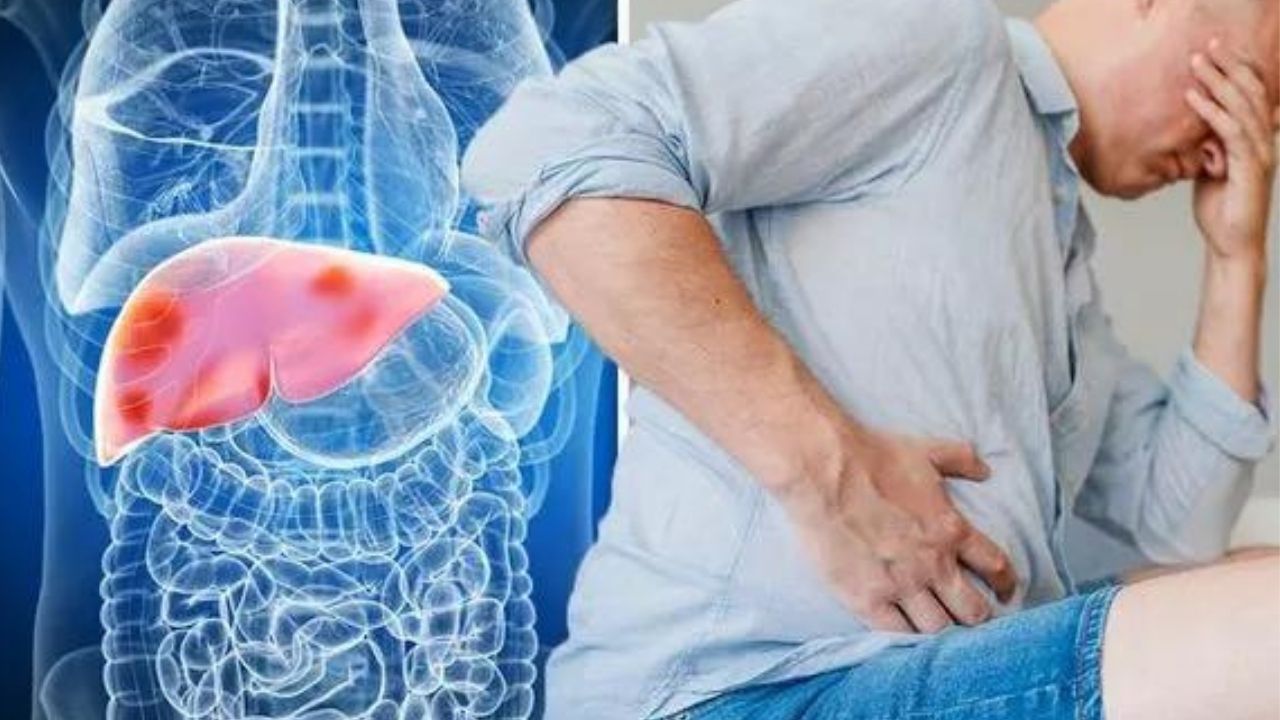The liver is responsible for continuously filtering blood that circulates throughout the body, in addition to eliminating toxins and other chemical waste products from the blood
The liver’s most vital duty is to process everything we eat, whether it’s food, alcohol, narcotics, or poisons. Infections in the blood can cause damage to the liver, and many other disease processes, inflammations, and diseases, including cancer in other organs, can also affect the liver.
Symptoms:
The following are examples of possible symptoms that should never be ignored:
1. Yellowing of the skin
2. Abdominal pain in the upper right quadrant.
3. Swelling in the abdomen
4. Nausea
5. Perplexity.
6. Insomnia.
There are five stages of liver disease:
“It can be related to excessive alcohol consumption or non-alcoholic fatty liver disease,” she says. It is most common in those who are overweight or obese. Diabetic persons are more likely to develop fatty liver disease.
Stage 1- Simple fatty liver is the first stage, and it occurs when the liver begins to accumulate fat. At this time, there is no inflammation or scarring in the liver. In the early stages, there are no symptoms. As a result, many people are completely unaware that they have fatty liver disease. Fatty liver does not always lead to an unhealthy liver in many people. Excess fat in the liver can be addressed with a healthy diet and frequent exercise.
Stage 2: Inflammation – Steato hepatitis is characterised by the accumulation of fat in the liver cells, as well as some degree of inflammation. During this stage, continuing destruction to liver cells from a variety of substances and diseases causes the liver to expand, and the person has upper right abdomen pain. The disease may be treated at this point. There may be no noticeable signs in patients with non-alcoholic fatty liver.
Stage 3: Fibrosis/Scarring – If the inflammation exhibited in stage 1 is not treated, the liver tissues scar and scarred tissue gradually replaces good liver tissue. Fibrosis is the medical term for this ailment. The liver and the blood arteries surrounding the liver have chronic scar tissue. At this stage, the liver can still function normally, and eliminating or treating the source of the inflammation may prevent future damage or reverse part of it. However, if scar tissue begins to replace a significant amount of normal tissue, the liver’s function begins to deteriorate. Proper medicine and lifestyle adjustments can help to reverse the illness to some extent during this stage.
Cirrhosis of the Liver (Stage 4) – The scarring is complete at this point, and there is no way for the liver to heal on its own. The liver ceases functioning effectively at this stage, resulting in symptoms such as jaundice, in which the eyes and nails turn yellow, a dull aching in the bottom region of the ribcage, or abdominal distension owing to fluid accumulation in the abdomen. The person loses appetite, loses weight, and other organs such as the kidneys, brain, and heart may be impacted. Although future growth can be slowed if the positive drug is eliminated, scar tissue in hosts is difficult to eradicate. The majority of people have a simple fatty liver or condition at an early stage of the disease. Only a small percentage of it progresses to the next level.
Stage 5: End-stage Liver Disease (ESLD) – There are two types of liver failure. Acute liver failure develops quickly and is usually caused by factors other than alcohol, whereas chronic liver failure develops slowly and is frequently caused by alcohol consumption, uncontrolled diabetes, hypertension, or obesity. The person’s cognitive or mental health is also harmed, and he or she frequently feels confused or bewildered.
Stage 6: Liver Cancer – This causes liver cancer, which can occur at any time in the liver and for a variety of reasons other than liver illness (primary liver cancer). It can appear at any time during the preceding four stages and is not always the last. Liver cancer, like ESLD, is lethal unless the tumour is removed.
While the liver is performing well, we must also look after the rest of the body’s organs and regulate diabetes, blood pressure, and heart disease by adopting a healthy lifestyle and eating a nutritious diet.

 हिंदी
हिंदी






